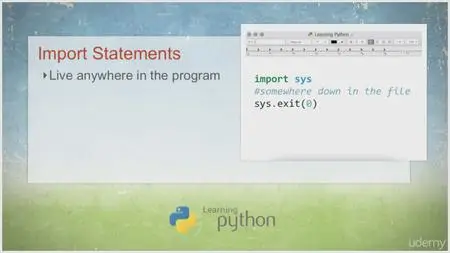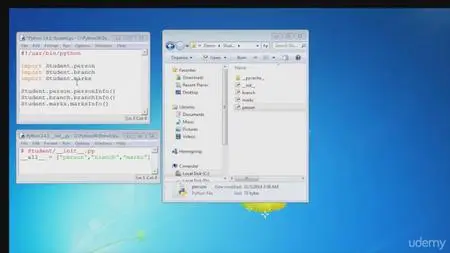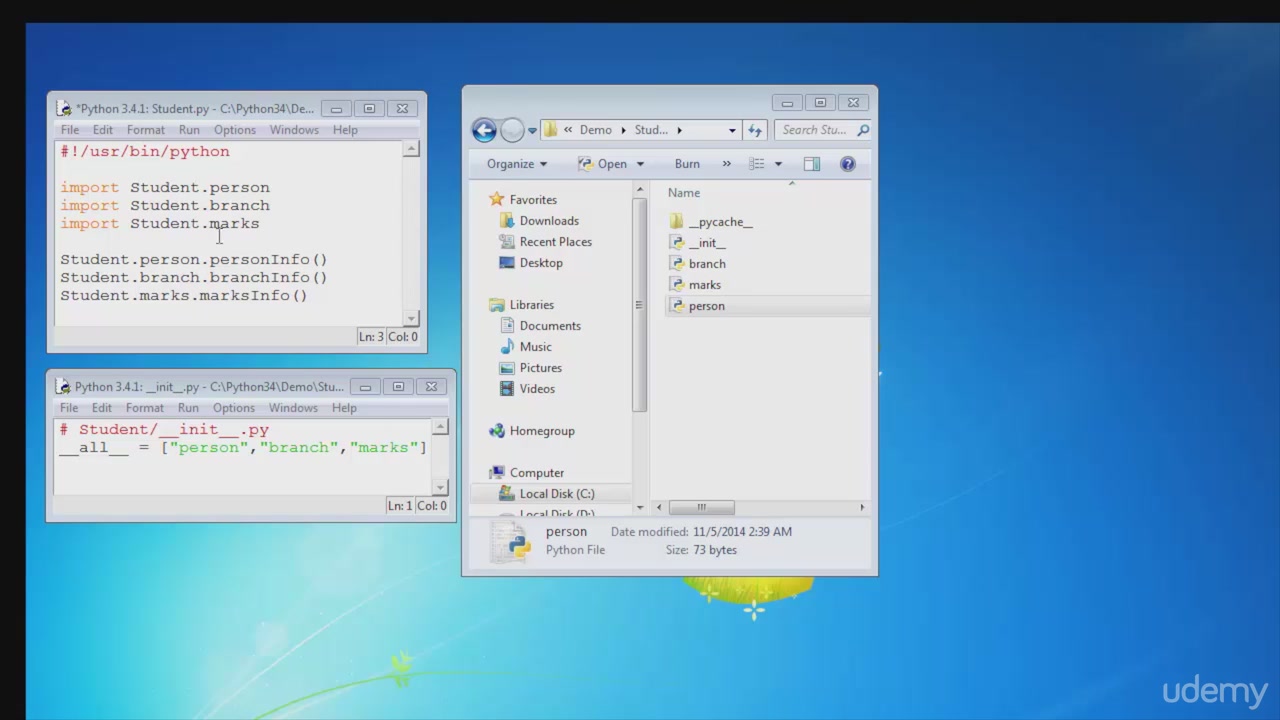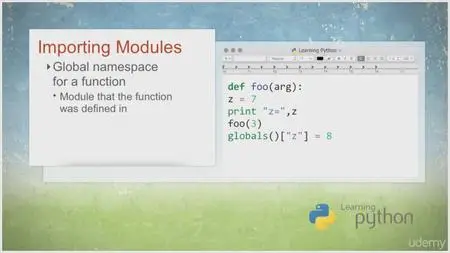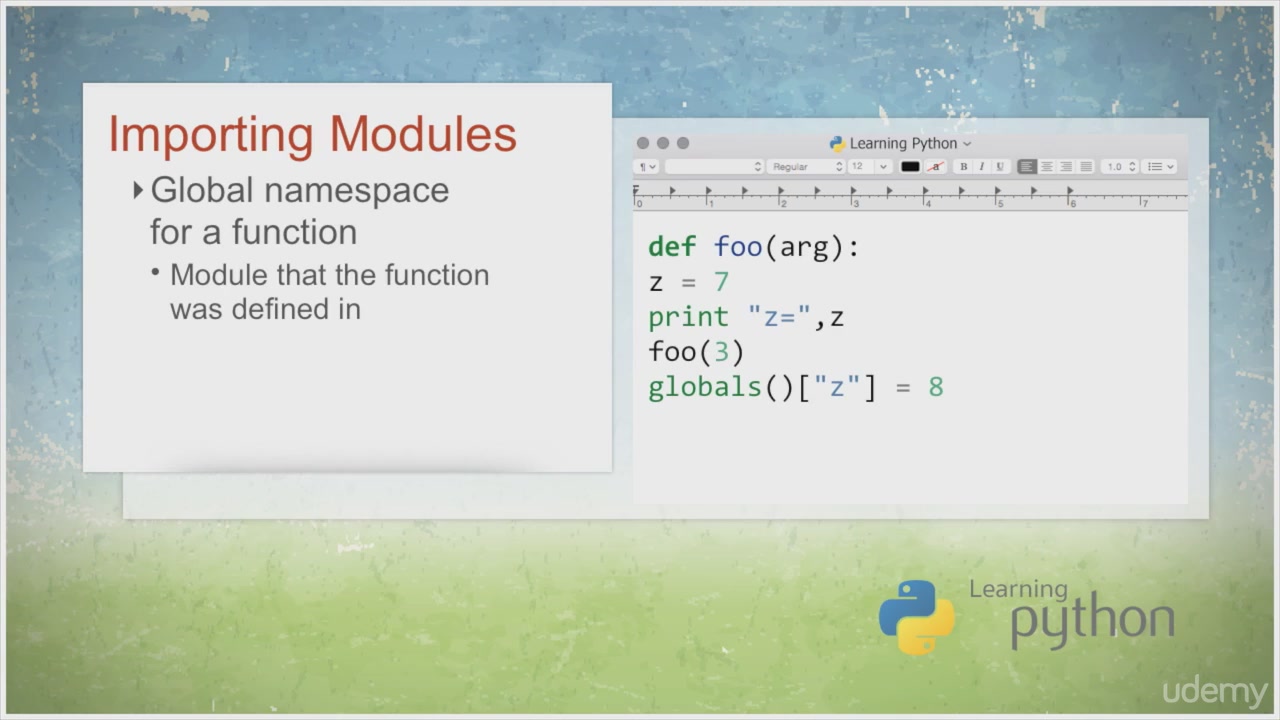Udemy - Learn Python Programming Language
WEBRip | English | MP4 | 1280 x 720 | AVC ~675 kbps | 29.970 fps
AAC | 52.5 Kbps | 48.0 KHz | 2 channels | 15:32:43 | 8.67 GB
Genre: Video Tutorial
WEBRip | English | MP4 | 1280 x 720 | AVC ~675 kbps | 29.970 fps
AAC | 52.5 Kbps | 48.0 KHz | 2 channels | 15:32:43 | 8.67 GB
Genre: Video Tutorial
Learn what Python is by learning about the language, structure, various features, functions, extensions, and modules.What you'll learn
Upon completion of this course you will have gained a basic understanding of Python, You will know how to install a Python environment, and be able to identify the different data types and data structures.
You will gain an in-depth understanding on conditionals, constructs, and loops as well as a firm understanding of modules, packages, and the importing of modules.
You will understand input/output handling and have a firm understanding of how to handle errors and exceptions in Python.
You will be able to identify the various modules, methods, and functions involved with the standard library, built-in functions, and string and text handling, and be able to utilize various tools used to test, debug, profile and tune Python.
You will have a basic understanding of runtime services and language services, and will be able to identify and describe what a database is and how they are used in Python.
You will be able to identify the various methods used for file and directory handling, and be able to identify how threads and concurrency work in Python.
You will have a solid foundation of how operating system services work and be able to identify how network programming is accomplished in Python.
You will be able to identify the key concepts for Internet protocols and data handling, and will be able to identify the key areas of web programming in Python.
You will be able to explain the different markup processing tools and markup languages for Python.
This is an introduction to the Python programming language. This course relies on the learner having some previous programming experience to effectively use the concepts explained in the course. With Python, you can deliver code faster and integrate systems more effectively than most other languages. In this course you will be introduced to the Python programming language and what it can do for you.
Prerequisites: Previous programming experience is suggested. This is a fast paced course and we'll throw a lot at you. If you're a programming newbie and not just a Python newbie, you may be in over your head.
Section 1: In the pre-assessment quiz you'll face questions from all sections of this Python training. Test your current knowledge and know your strengths and weaknesses.
Section 2-4: The student will learn how you can make the best use of Python to meet your programming needs. They will be learning how to install Python, configure and customize Python, and how to terminate a program in Python. As well as explaining the different data types and structures that are used in Python.
Section 5-7: Python programs can be decomposed into modules, statements, expressions, and objects, as well as allows you to keep blocks of code in a file and use them as a module. The student will also be introduced to concepts on standard input, output, and error.
Section 8-10: The student will be learning about how exception handling is carried out in Python, take an in-depth look at doctest module and unittest module and its various tools, and give you an in-depth look at standard library, built-in functions, and string and text handling.
Section 11-13: The student will be introducing the student to the functions, modules, and operations involved in runtime services and language services, cover programming interfaces in Python, and explain about modules that are used for processing various kinds of operations in files and directories.
Section 14-16: The student will be introduced to library modules that enable threads and concurrency in Python, given an overview of some of the operating system services, and cover how Python offers modules for different processes to communicate.
Section 17-19: The student will be learning about Internet protocols and how they are used to communicate across a set of interconnected networks and computers, cover methods, Internet protocols, and the technology used to combine Python with a web server to create dynamic content, and covers Python modules such as HTML, XML, DOM and SAX, and Expat.
Section 20: Final Exam
Who is the target audience?
This course is intended for programmers wishing to learn the basics of Python and its concepts.
also You can watch my other last: Programming-posts
Screenshots
Exclusive eLearning Videos ParRus-blog ← add to bookmarks




